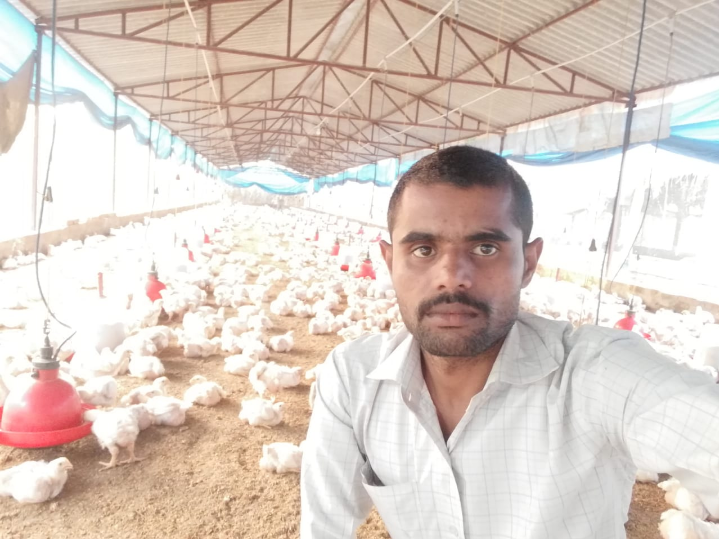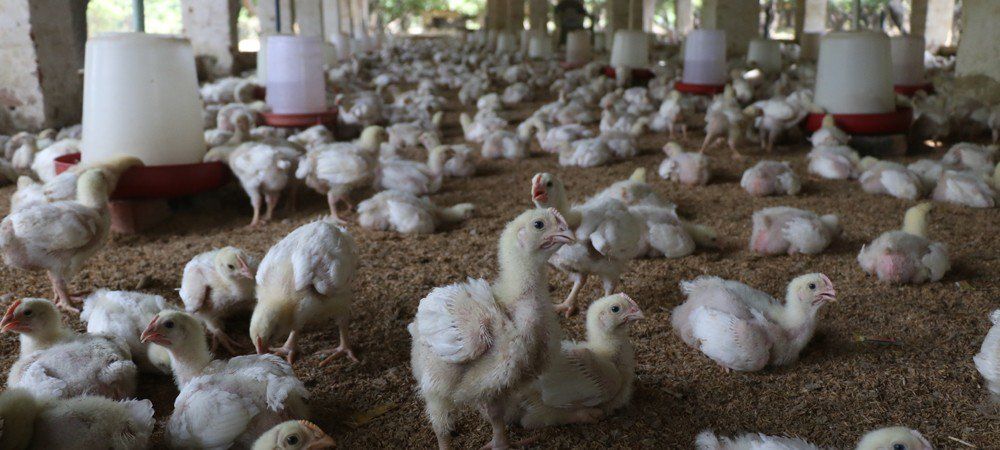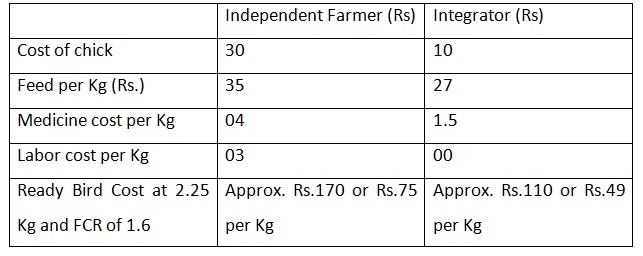The broiler is selling cheaply these days. That’s bad news for small and independent farmers
The cost of production at broiler farms has shot up steeply in the past two years. In 2017-18, it was due to the high rise in chick prices and in 2018-19 it was due to high prices of both chicks and the feed


Ibne Ali
The cost of production at broiler farms has shot up steeply in the past two years. In 2017-18, it was due to the high rise in chick prices and in 2018-19 it was due to high prices of not just chicks but also the feed.
In two years, maize production in India has reduced by nearly 20%. Also, the prices of soya DOC have increased due to erratic monsoon. This has put pressure on the profit margins of feed millers, forcing them to increase the feed prices.
In India, there are two parallel production systems in broiler farming. First is the integration system in which big corporates operate broilers through contract farming with the help of small farmers. In this system, companies provide all inputs like chicks, feed, medicine and technical help to the farmers, who provide their sheds and labour. The produce generated belongs to the companies, who share some of their profit with the farmers. The cost of production in this system is very low and the ready product is highly competitive in the market.
In the second system, small farmers buy all the inputs and run their own broilers. Although no authentic data is available, a little extrapolation can help one deduct that the small farmers’ cost of production is relatively higher than in the integration system by about 30%. Also, the product of such small farmers is not as competitive in the market as those in the integration system. It means when the demand in the market is low or production shoots up due for any reason, small farmers usually end up with losses.

When the market performs extremely well in extraordinary conditions and integration production is not high, small farmers earn sufficient profits due to the demand-supply gap.
It is a complex system to understand and it needs a detailed account of many other factors.
Let’s now delve into the breakup of the cost of production of broilers. To determine the cost of production, we need the following inputs:
- The cost of chicks
- The cost of feed
- The cost of medicine
- Labour cost
- Shed depreciation (we can ignore this to make the calculation easier).
There are some other hidden costs, which, in any case, the farmers have to bear irrespective of whether they are in the integration system or do independent farming. These hidden costs include maintenance of shed and its compound, loss due to any causality, rise in FCR due to any non-manageable reasons, the poor performance of bird due to poor quality of chicks or feed, etc.
Now, look at this table (here we are talking of big corporate integrator companies which influence market/mandi broiler prices). All the values are approximate and as prevalent recently (November 2019)

As can be seen, an integrator can sell for Rs 55 per kg. Even if the margin is reduced, his business can survive in the market due to the competitiveness of his product.
Reasons for low broiler prices
High broiler production vis-a-vis demand is one of the main reasons for such a drop in price.
- Pleasant season, low mortality: This pink season is a blessing for broilers. The temperature and humidity are absolutely fine and the disease load is low. The production, therefore, rises.
- Due to low market price, farmers tend to hold the bird longer, which increases its weight, thereby affecting the market.
- Festival and marriage season: In view of the festival and marriage season demand, high production was expected. But the production has outstripped the demand
- Demand sluggishness: The sluggishness in other economic sectors has affected domestic consumption.
Dr Ibne Ali is a livestock and poultry consultant and is based in New Delhi
(Views are personal)

